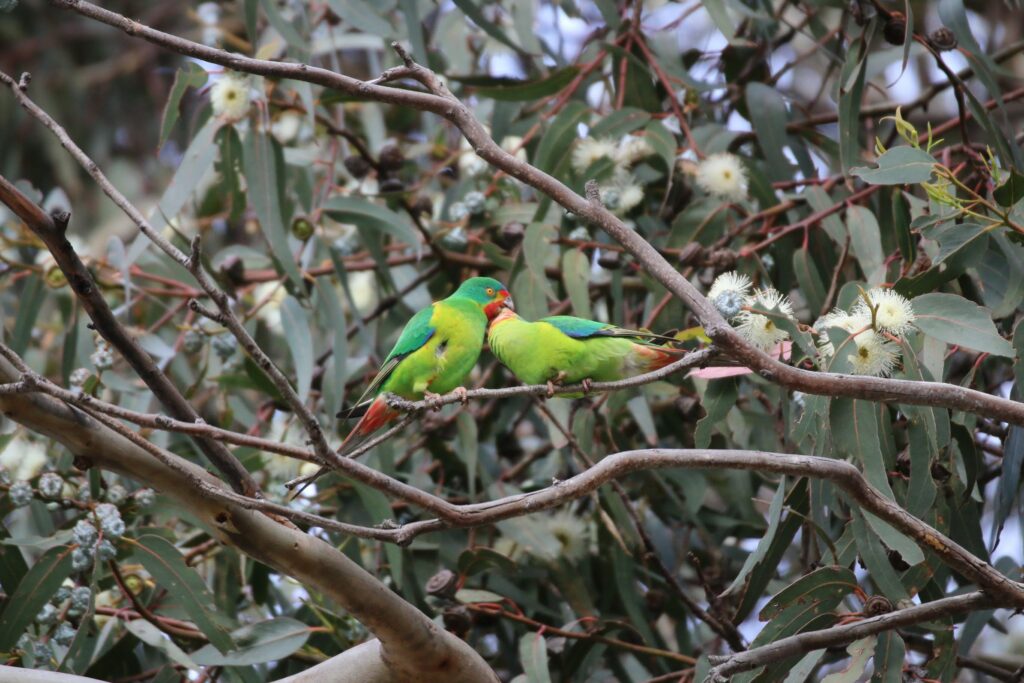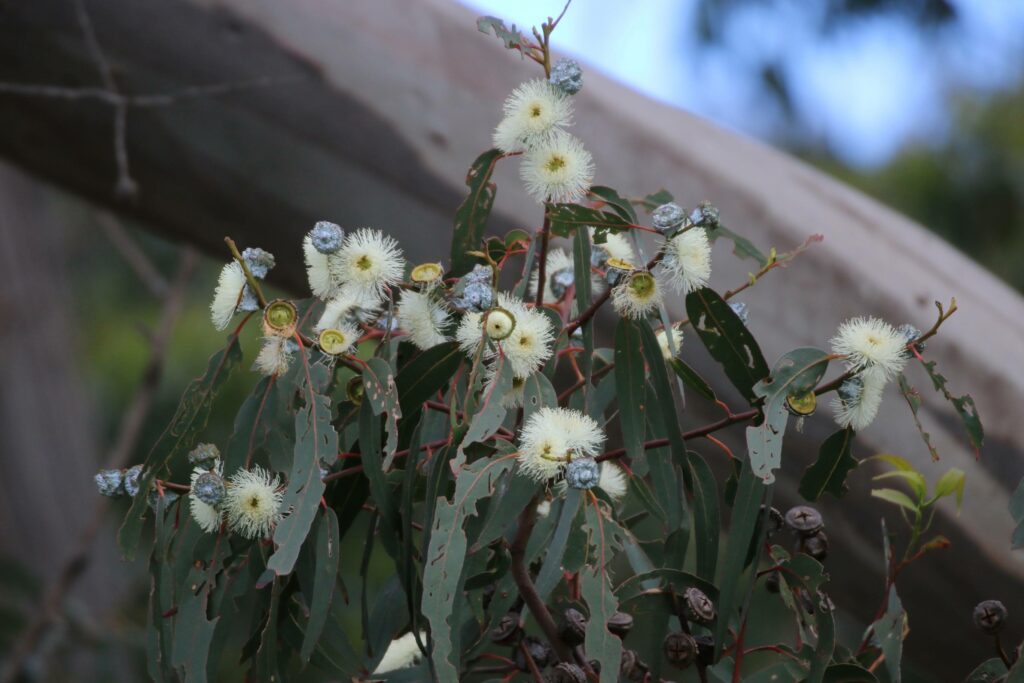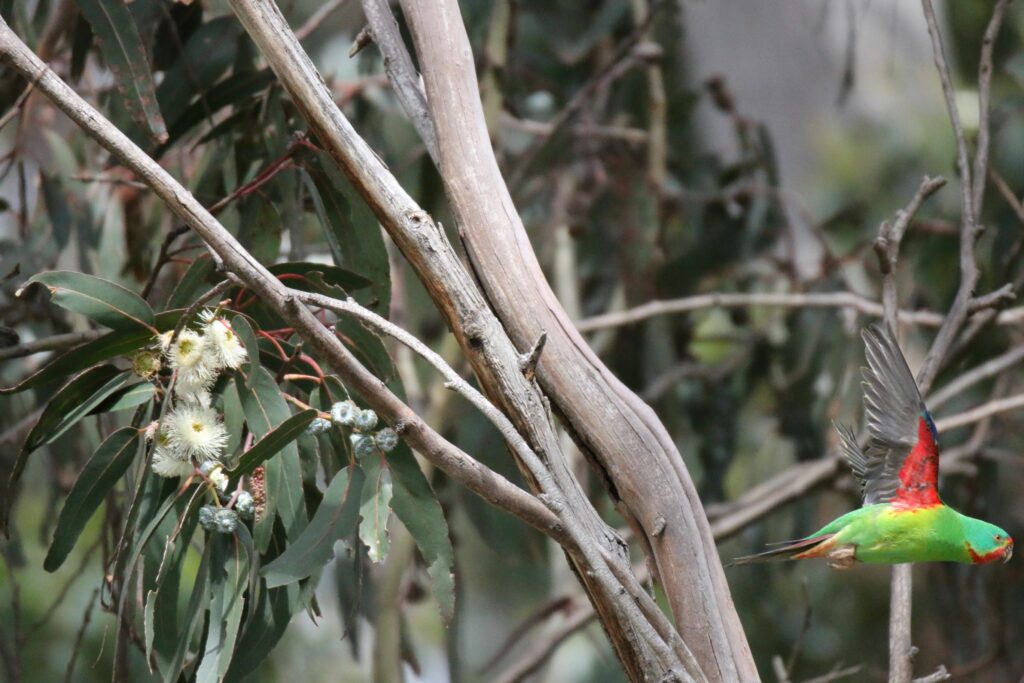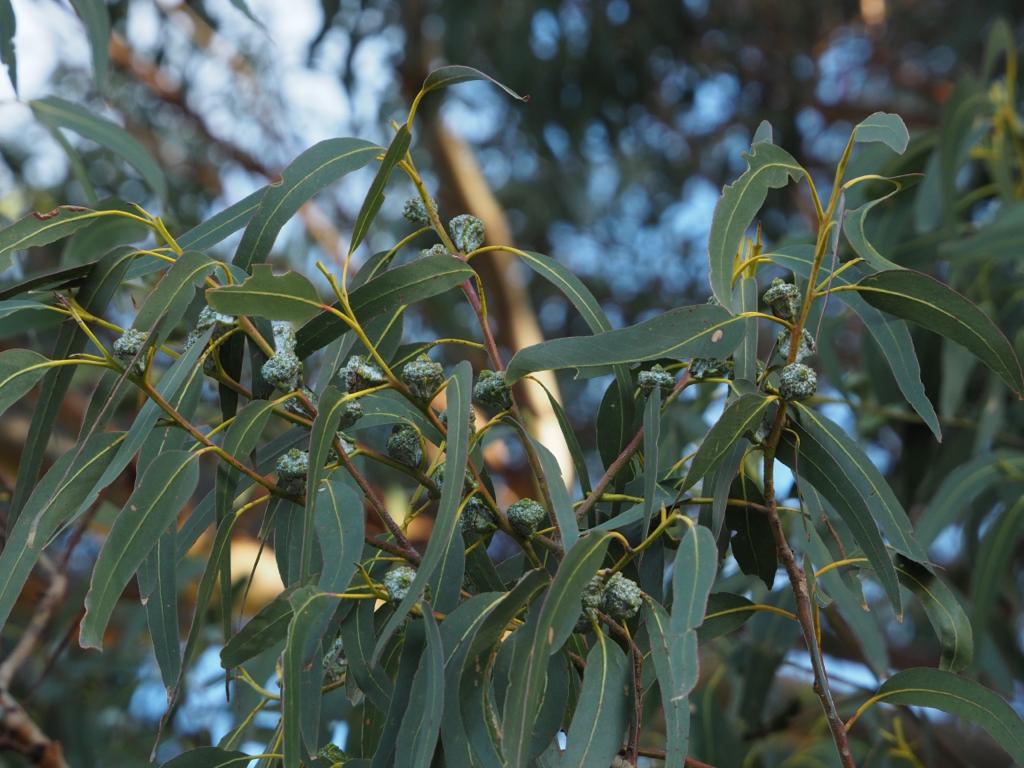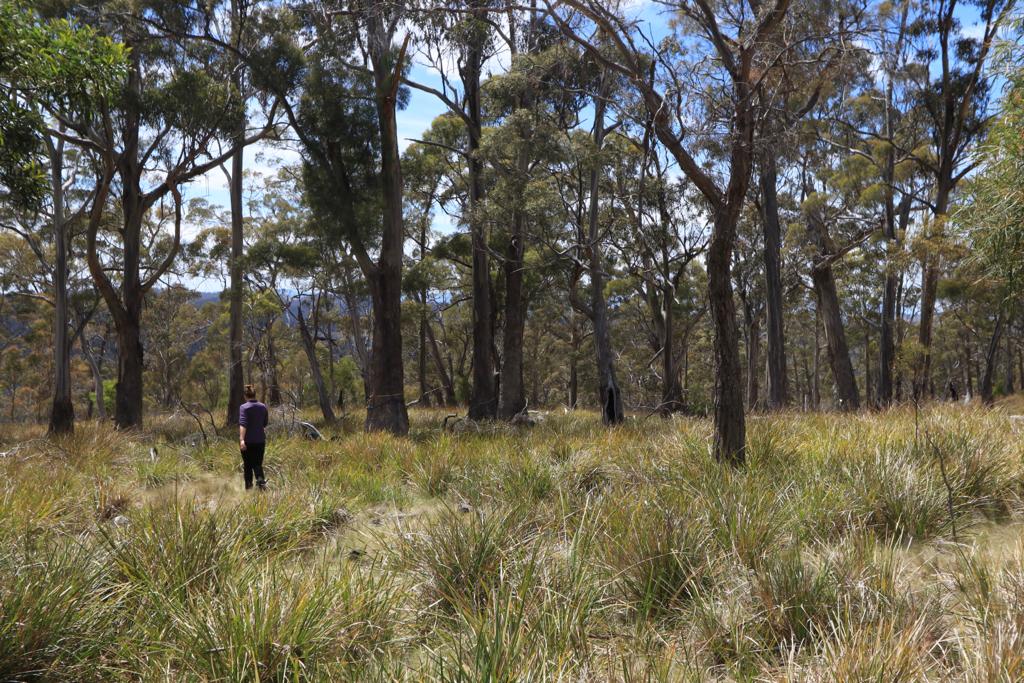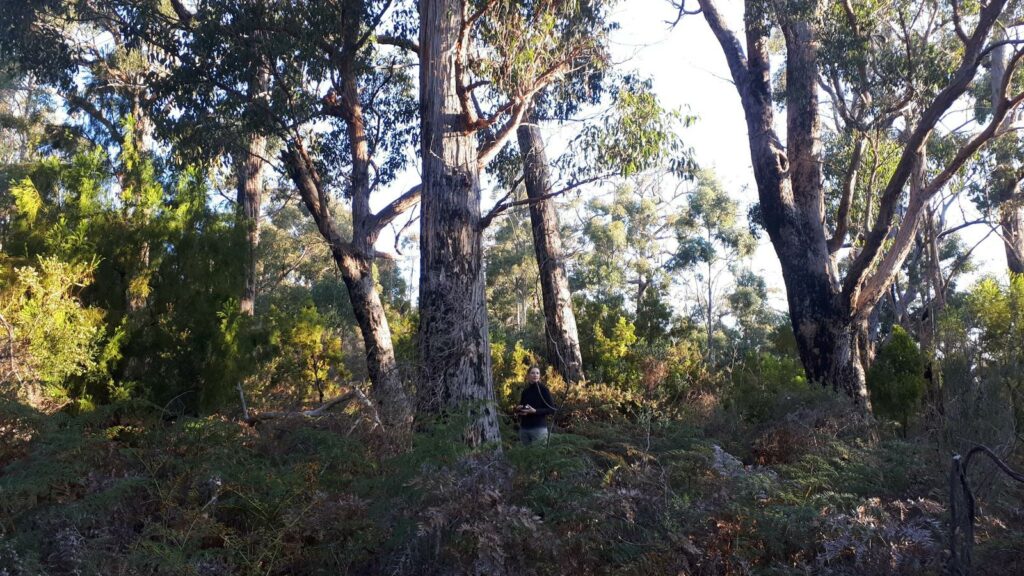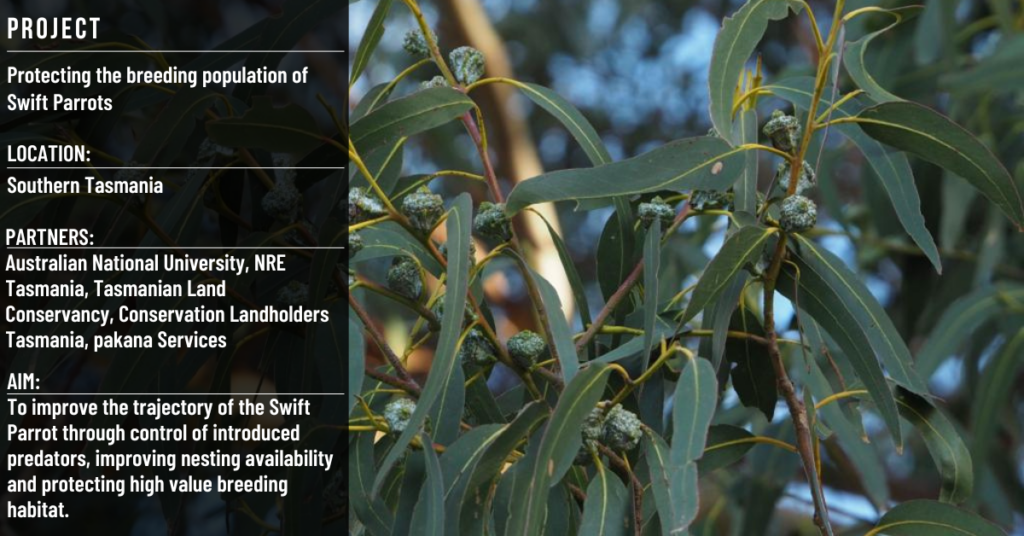
Tasmania is the only place in the world where the critically endangered Swift Parrot breeds, with many of their core breeding areas in the south-east of the state. Swift Parrots have a very specific diet and rely exclusively on the nectar of blue gums (Eucalyptus globulus) and black gums (Eucalyptus ovata) to feed their nestlings. These are also their preferred nesting trees, so healthy blue and black gum forest is incredibly important for the busy breeding season. Big old trees provide the best nesting hollows and research by the Australian National University has shown that breeding success is higher when nesting hollows are close to flowering trees. This is because male Swift Parrots will return to the nest many times a day to feed the female who stays in the nest to incubate the eggs. Once they hatch, both parents travel back and forth to the nest all day, collecting nectar and feeding the quickly growing youngsters who leave the nest when they are around 6 weeks old.
One of the biggest challenges in managing Swift Parrots is that they are both migratory and nomadic. They leave Tasmania after their breeding season, spending the winter in southern Queensland, New South Wales, the Australian Capital Territory and Victoria. When they return to Tasmania in spring, they do not come back to the same trees they did the previous breeding season, as eucalypts rarely flower every year. Instead, they choose their nesting sites based on where trees are flowering. When blue and black gums do flower, they generally do so en masse, with all or most trees in an area producing flowers. These mass flowerings, known as a mast event, are integral to the breeding success of Swift Parrots. This interesting flowering behaviour may be a reproduction strategy and is likely driven by a complex relationship between soil nutrients, rainfall, elevation and temperature.
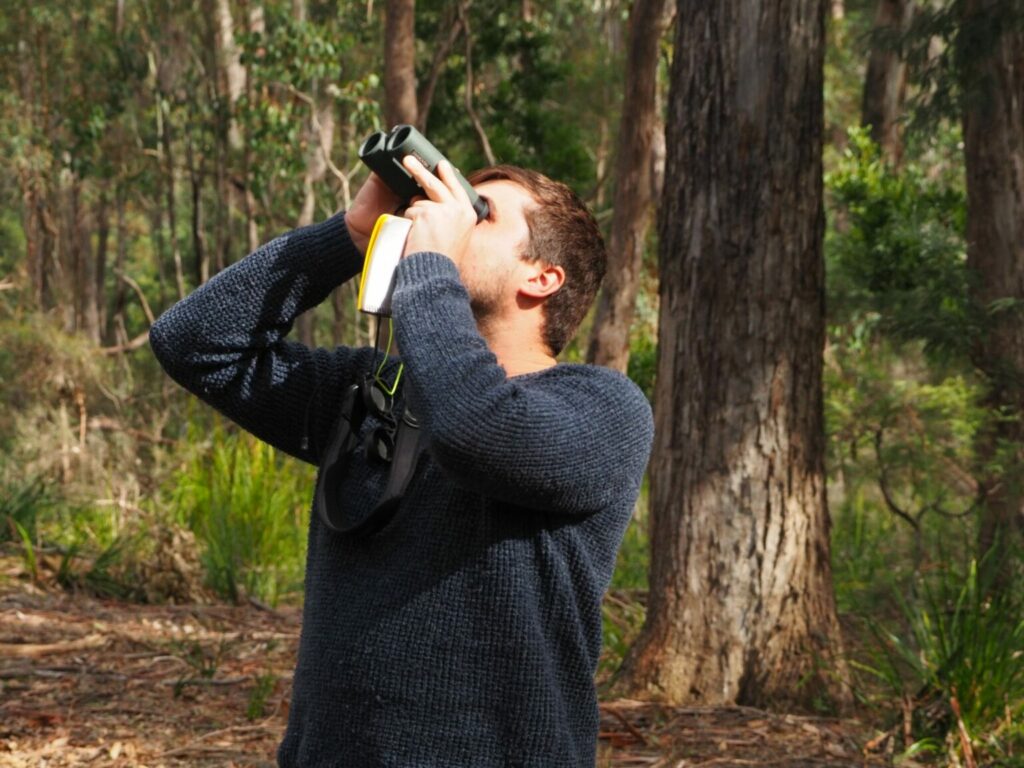
Through our Swift Parrot program, we have been supporting researchers at the Australian National University (ANU) to carry out annual flower bud surveys. The purpose of these surveys is to help predict where and how much blue gum and black gum flowering will occur across south-eastern Tasmania. Eucalyptus flower bud development occurs over many months so the bud surveys can be completed before the first Swift Parrots arrive for their breeding season.
Dr Dejan Stojanovic has been studying Swift Parrots and their breeding habitats for over 10 years. For the last three years, Dr Stojanovic and other members of the ANU Difficult Birds Research Group have surveyed six areas in south-eastern Tasmanian that have previously been identified as important Swift Parrots breeding and foraging areas. These include the southern forests (south of Huonville), the eastern tiers, the Weilangta region, the Channel, Bruny Island and the Hobart region. At designated sites within each area, researchers check for the presence and abundance of flower buds. They can then calculate the average proportion of budded trees per region to predict where the most flowering will occur and therefore where Swift Parrots are most likely to nest that year.
Surveys from this year indicate that south Bruny Island, the Tasman Peninsula and the Eastern Tiers regions are likely to have the largest aggregations of nesting Swift Parrots. Having a better idea of breeding locations year on year information can help researchers plan management actions in advance and informs decisions on which activities to undertake in each season. Being able to plan ahead also reduces disturbance to breeding groups and improves the efficiency of on-ground efforts.
This project is supported by NRM South through funding from the Australian Government’s National Landcare Program. The full flowering bud survey report can be found here.
